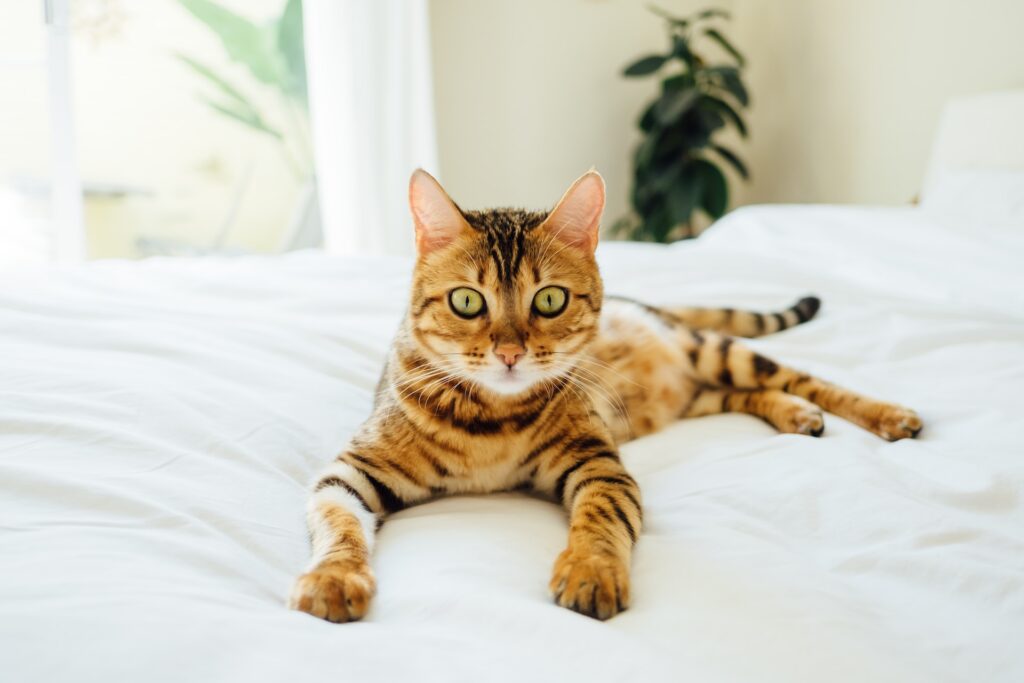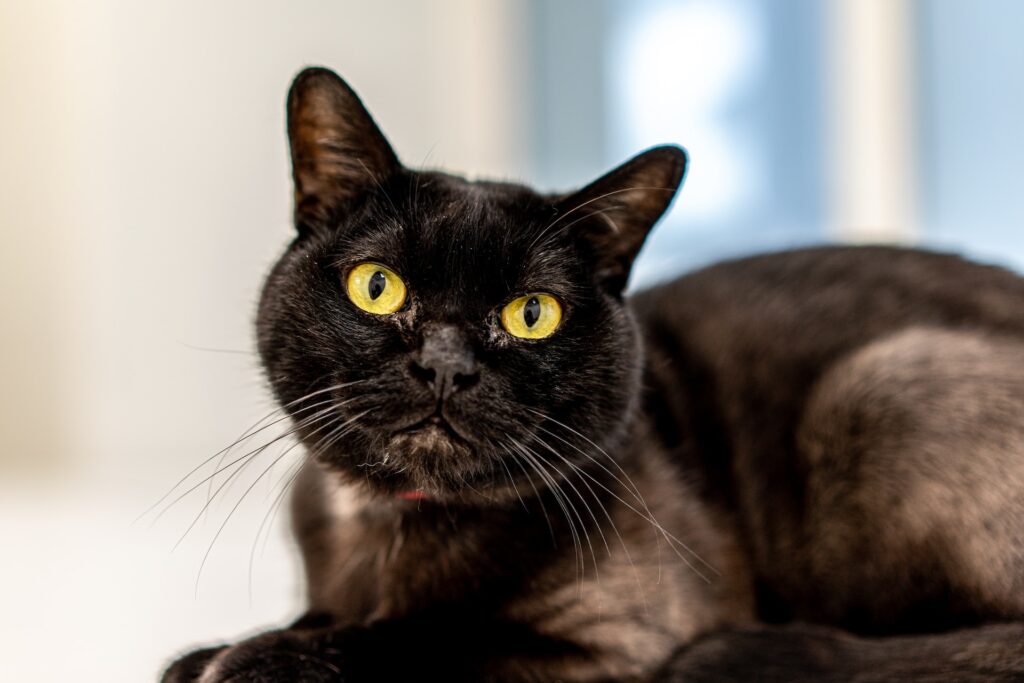What type of cat is yours? While most people may think of cats solely in terms of their appearance — from tuxedos to tabbies — there exists an entire universe of rare and popular cat breeds.
We analyzed our database of US pet owners on Rover.com to learn more about our relationships with cats, prevalent cat breeds, and how cats enter our lives. Here is what we discovered about the most common cat breeds:
It’s all about the character
Prospective cat proprietors value color and appearance, but looks are not everything. We’ve discovered that the two most sought-after characteristics by new cat owners are affection and playfulness.
Cat owners idolize their feline companions, even when they don’t comprehend them.
While some individuals may find cats difficult to comprehend, their proprietors are typically enchanted by their enigmatic behaviors. Many cat owners have stated that they are happier with a cat by their side and appreciate caring for their cat, despite the fact that some wish they had a better understanding of purring, meowing, and scratching.
The Most Popular Cat Breeds
1. Domestic Shorthair

Not to be confounded with the American Shorthair, the Domestic Shorthair is frequently referred to as the “mutt” of cat breeds due to its unknown and mixed ancestry. As a result, Domestic Shorthairs can exhibit a wide range of physical characteristics, though they are typically medium-sized with round features, sleek and soft short coats, and any color.
It is believed that after being domesticated in Egypt around 2000 B.C., cats such as the Domestic Shorthair spread around the world, including to North America (likely on the Mayflower and other transports). These cats were prized as mousers, pursuing rodents and other small pests, and were regarded as diligent. On average, domestic shorthair cats live between 12 and 14 years, but they have been known to live much longer.
2. American Shorthair

Though American Shorthair cats would love to cuddle with you on the sofa, they are also known as working cats because they are robust, muscular, and alert. They typically adapt well to humans and animals equally and have a balanced disposition.
All cats have unique dispositions, but an American Shorthair is likely to be both sociable and independent. In contrast to the Domestic Shorthair, which is a mix of unknown breeds, these cats are selectively bred for specific characteristics that must meet the breed standard.
Similar to the Domestic Shorthair, American Shorthair cats were brought to North America by European immigrants to control the local rodent population.
3. Domestic Longhair

Domestic Longhair cats are, like Domestic Shorthair cats, merely cats with long hair and unknown ancestry. This is why they are so common; most cats are not purebreds! Like their shorthaired counterparts, they were transported from Europe to North America on transports.
These cats are available in a wide selection of colors, from orange to white to black to grey. Their coat is typically a few inches long, and they have distinct tufts on the bottoms of their limbs and around their ears. Regular grooming helps domestic Longhair cats maintain their gorgeous tresses.
Some hypothesize that the recessive gene for long hair was selectively bred out by cat owners in harsher climates, such as Russia, Iran, and Turkey. Domestic Longhair cats have a reputation for being excellent predators, which makes them particularly appealing to humans seeking assistance with rodent control.
4. Maine Coon

The Maine Coon has a relatively sizable body and a thick, dense coat. They are muscular, robust, and also regal in stature. Their large eyes, substantial claws, and prominent cheekbones set them apart from other cat breeds.
Personality-wise, these cats walk a fine line between wanting to be near their owners and requiring their own space. They have a reputation for being undeniably attentive and may follow around family members, but, like many cats, they can be wary of strangers. In contrast to most other cat breeds, Maine Coons have a dense, water-resistant coat; they may appreciate a water fountain or even water play!
It is believed that Maine Coons are endemic to North America, as they were placed on the map during the colonial era. Some even assert that Marie Antoinette owned several cats resembling Maine Coons, which were carried to the continent during an expedition to prevent the queen’s beheading. She did not make it, unlike the animals. Whether or not this anecdote is true, the popularity of Maine Coons has increased due to their attentive yet tough personalities.
The Maine Coon was incorrectly declared extinct in the 1950s after the importation of Persian cats and other long-haired breeds to North America. Since then, Maine Coons have reclaimed their position as the fourth most popular cat breed in the United States.
5. Siamese

Siamese cats are frequently cream-colored with grey-brown paws and ice-blue eyes, making them one of the most distinctive varieties. From their large, triangular ears to their delicate paws, everything about Siamese is a touch more pointed than in other breeds. Their ears and faces are typically the same shade of grey-brown. Currently, Siamese cats are bred to appear in a variety of colors and patterns.
Their busy and gregarious personalities make them excellent companions for similarly active individuals. They prefer not to be left alone for extended periods of time and may require more playtime than the average cat. Additionally, Siamese cats are renowned for their intelligence.
Siamese derive their appellation from their country of origin, Thailand. Prior to its name change in 1939, Thailand was known as Siam. Rutherford B. Hayes owned a Siamese cat from 1877 to 1881 when he was president of the United States. Siamese cats ultimately made their way to Europe, most notably in the late 1800s, and then to North America.
6. Russian Blue

The coats of Russian Blue cats are short and plush, with variations of dark grey and silver. They may have subtle stripes but are otherwise uniform. Russian Blues have double coatings, giving their delicate frames a plush appearance. They frequently have yellow-green irises and a distinct “smile”
Russian Blues are typically described as primarily quiet and as seeking out a comfortable location to sleep, but they are social within their family. They may be the sort to withdraw during large group gatherings.
There are numerous legends about the origins of cats, but some believe the Russian Blue is descended from cats kept by Russian czars. Eventually, these cats were imported to North America in the early 1900s, and they are currently the seventh most prevalent breed of cat in the United States.
7. Ragdoll

A pointed breed, Ragdoll cats are large and furry. Pointed-breed cats have paler bodies with darker faces, legs, tails, and ears. Their coloring may vary slightly, but their blue eyes are distinct.
Ragdolls, one of the most affectionate breeds, frequently accompany their owners around, greet them at the door, and hope for a bed. They are known for being relaxed and not overly active.
Ragdolls were primarily free-roaming cats until Ann Baker, a breeder in California, created the Ragdolls we know today in the 1960s.
8. Bengal

The Bengal’s marbled pelt is its most distinguishing characteristic, but it is also incredibly soft and muscular. Even at a mature age, Bengals are typically active and playful in a manner resembling that of a kitten, despite the fact that all Bengals have unique dispositions. They require owners who are willing to keep them occupied and entertained, as well as those who are tolerant of cats who may require a more stimulating, enriched environment to flourish.
Bengals are considered to be a hybrid species because they have been mated with non-domesticated animals. The Bengal cat breed can be traced back to Jean S. Mill, who bred a domestic cat with an Asian Leopard Cat to produce a cat with a docile, affectionate disposition and a leopard-like appearance. The Cat Fanciers’ Association states, “The Bengal is the only domestic cat breed that can have rosettes like leopards, jaguars, and ocelots.”
9. Bombay

Bombay cats have a striking resemblance to panthers. In the 1950s, they were created by combining a domestic shorthair with a Burmese cat. American breeders desired to produce a cat with the physique of a Burmese but with a black coat and copper eyes. The Cat Fanciers’ Association eventually recognized the new breed in the 1970s, and although it is not the most common breed, it continues to have a dedicated fan base.
Many Bombays enjoy frequent affection and play, making them excellent companions for pet owners with a busy lifestyle. They have a reputation for being intelligent and trainable. Despite ranking ninth on our list of the most popular cat varieties, Bombay are adored.
10. Persian

The bodies of Persian cats are stocky, and their features appear flat and slightly scrunched. This is one of the qualities that attract people, but it can necessitate additional medical care. They have lengthy, plush coats in a variety of colors, including black and white. Though they share some morphological traits with Maine Coons, they are typically smaller and weigh between 7 and 12 pounds.
Although they are affectionate with their owners, Persian cats have a reputation for being aloof with strangers and are less likely than other varieties to demand attention. In comparison to other varieties, they can be relaxed and calm.
The Persian is one of the oldest known varieties and was discovered in Iran, formerly known as Persia. The breed debuted to a wider audience at the 1871 Crystal Palace cat exhibition and is also known for being Queen Victoria’s favorite.

